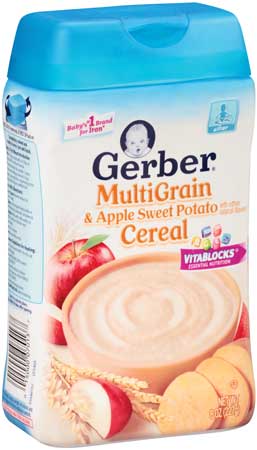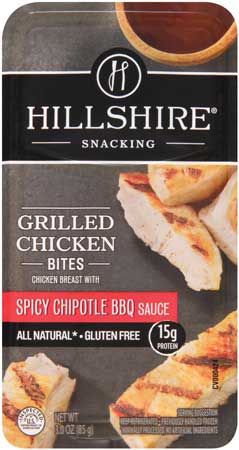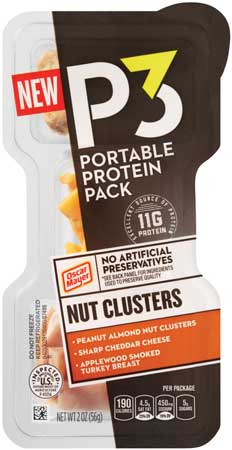Consumer Convenience Pivots Package Innovation
PACKAGING
Package design that enables convenient food solutions is shifting once more. This is largely because the concept of what consumers believe is convenient has changed considerably. In the 1950s, a cake mix (instead of making a cake from scratch) offered convenience, and the packaging solution was a cake mix in a plastic bag within a paperboard carton. Now, convenience has a multifaceted meaning beyond ease of food preparation. The trends of on-the-go eating along with all-day snacking are driving major food packaging changes. To address these developments, convenient packaging needs to make snacks and meals as portable and fun as a mini-picnic, provide portion control, enable consumer customization, and allow for convenient package disposal. Package innovations incorporate these benefits through the creative use of design, shape, color, and labeling.
Communication of Product Benefits
Packaging that showcases products with features such as convenience and variety allows for rapid intuitive connections with consumers. Refined packaging with a focus on convenience can provide creative cooking solutions and enhance social interactions. For example, the cutaway paperboard carton of Emmi Fondu All-in-One showcases a complete fondue kit with bowl, tea light, and holder and is a finalist in the 2016 De Gouden Noot packaging contest. At retail, the image of an easy, fun fondue is communicated well to consumers. A social fondue occasion is made simple with a microwave- and oven-safe bowl to heat the cheese. Material choices such as the steel bowl by Ardagh Group, Luxembourg (ardaghgroup.com), which holds the fondue, and the foil lid and paperboard carton make recycling intuitive. Further optimization will likely convert the polypropylene bowl holder with silicone grips to more recyclable polyethylene terephthalate (PET) with integrated grips. The paperboard cutaway carton provides the image of a social fondue occasion and implies the convenience of a no-mess fondue.
Package shape can also be used to communicate product convenience and product benefits to consumers on crowded retail shelves. Chobani Crunch and Fage Crossovers come in two-compartment cups with yogurt in one and a topping in the other. The need to buy or carry the extra ingredient is eliminated; consumers simply add the topping to the yogurt when consumed. While fruit or granola on top of yogurt within a single standard cup is available, the added benefit of fresh ingredients is communicated visually with the two-compartment package, allowing consumers to quickly access the product.
 Color is also used to reveal added product benefits to consumers. For example, the GreeNest ryegrass and recycled-paper green egg carton by Huhtamaki, Espoo, Finland (huhtamaki.com), portrays the image of healthful eggs from free-range chickens. The cartons require 60% less water and 10% less carbon dioxide than standard recycled paper egg cartons. And the association of green packaging with wholesome, sustainable products is strong. Another example is Gerber’s cereal package redesign from a paperboard carton to an easy-grip high-density polyethylene container. The new package has a color-coded full shrink label, which replaces the previous paperboard carton used since 1939. The closure on the new package conveys freshness while the previous package design included a metal pour spout that lacked a tight seal. The color-coded closures by Gateway Plastics, Mequon, Wis. (gatewayplastics.com), provide resealable dispensing with audible clicks. The new package design enables one-handed food preparation and ease of product identification at retail, in the home, and on the go. Gerber also uses color to distinguish between organic (green) and standard (light blue) cereals.
Color is also used to reveal added product benefits to consumers. For example, the GreeNest ryegrass and recycled-paper green egg carton by Huhtamaki, Espoo, Finland (huhtamaki.com), portrays the image of healthful eggs from free-range chickens. The cartons require 60% less water and 10% less carbon dioxide than standard recycled paper egg cartons. And the association of green packaging with wholesome, sustainable products is strong. Another example is Gerber’s cereal package redesign from a paperboard carton to an easy-grip high-density polyethylene container. The new package has a color-coded full shrink label, which replaces the previous paperboard carton used since 1939. The closure on the new package conveys freshness while the previous package design included a metal pour spout that lacked a tight seal. The color-coded closures by Gateway Plastics, Mequon, Wis. (gatewayplastics.com), provide resealable dispensing with audible clicks. The new package design enables one-handed food preparation and ease of product identification at retail, in the home, and on the go. Gerber also uses color to distinguish between organic (green) and standard (light blue) cereals.
Packaging that offers transparency to view colorful ingredients also palpably communicates freshness to consumers. Rapid decision making at retail is possible when consumers can quickly understand the convenience and freshness. For example, spices from House Food Group, a Japanese food manufacturer, come in transparent tubes that received the silver award at the DuPont Packaging Awards. Colorful spices seen through clear tubes conjure freshness and inspire consumers to explore the use of spice in a more convenient form.
Consumers are familiar with the recyclability of PET trays and the ease of snacking they provide. Fruits and vegetables in PET snack packs meet the convenience needs of today’s consumers. For example, Truly Good Foods Garden Chips in a PET tamper-evident tray that is peggable at retail offers a format that is easy to display and allows consumers to view the vegetable and bean chips. Naturipe Farms Berry Quick blueberries in modified atmosphere packaging (MAP) stay fresh for three weeks and are portable for lunchboxes and briefcases. The eye-catching packs communicate portion control, ease of handling, and the healthfulness of pre-washed blueberries.
Consumers are increasingly reliant on labels for detailed information. Modern labels not only communicate product information; they also inspire creative meal solutions. For example, SmartLabel by Label Insight, Chicago (labelinsight.com), employs smartphones to allow consumers to access additional product information such as recipes, country of origin, and allergens through the package label. This extra information online keeps labels simple and easy to read.
--- PAGE BREAK ---
Picnic Packaging
Packaging is pivoting to meet the convenience needs of Millennials and younger generations. The increase in picnic-like meals requires new package solutions. In addition to providing adequate shelf life in variable temperature environments, convenient picnic-like snack and meal packaging needs to be portable and useable in a variety of settings. This presents complex package-design challenges. Superior seals between disparate products within a single container are needed to inhibit moisture transfer and reduce oxidation and microbial growth. If adequate seals are not maintained, moisture from meat, for example, would transfer to low-water activity products such as dried fruits, nuts, and breads, altering textures, promoting microbial growth, and increasing lipid oxidation. With added moisture, flavor profiles are also altered. Hillshire Snacking Small Plates, has 1/4-inch to 3/8-inch seal areas and large side draft angles between four compartments containing meats, cheese, and bread/crackers. This allows for high-speed manufacturing on a horizontal tray packaging line and package security during consumer handling of the four-compartment tray. This extra seal and draft angle design usurps valuable retail space, but seal integrity is achieved. Displayed on end within refrigerated cases, these trays offer the semblance of a picnic while sitting in an office or on the go and the enjoyment of combining healthful ingredients without the time-consuming task of preparing a meal.
 Sometimes products differ in preservation technologies and the multi-compartment package does not meet all of an individual product’s needs. Such is the case with the two-compartment tray of Hillshire Snacking Grilled Chicken Bites, in which the dipping sauce is within one compartment of the tray and the chicken is in the other. The sauce requires drastically different processing and packaging than the grilled chicken. Optimization of the design likely includes resizing of the dipping section of the tray, enabling a hot-fill application, and reformulating the sauce to enable filling on the same production circuit as the grilled chicken. Thus, knowledge of product preservation methods, formulation flexibility, product-fill temperature viscosity, product-fill constraints, volume ratio vs other products in the multicomponent package, retail display parameters, and the need for MAP are all necessary for optimal package design. To meet consumer needs for creative snacking of often disparate products, packaging innovation, science, and design need to align—all while facilitating rapid consumer decision making.
Sometimes products differ in preservation technologies and the multi-compartment package does not meet all of an individual product’s needs. Such is the case with the two-compartment tray of Hillshire Snacking Grilled Chicken Bites, in which the dipping sauce is within one compartment of the tray and the chicken is in the other. The sauce requires drastically different processing and packaging than the grilled chicken. Optimization of the design likely includes resizing of the dipping section of the tray, enabling a hot-fill application, and reformulating the sauce to enable filling on the same production circuit as the grilled chicken. Thus, knowledge of product preservation methods, formulation flexibility, product-fill temperature viscosity, product-fill constraints, volume ratio vs other products in the multicomponent package, retail display parameters, and the need for MAP are all necessary for optimal package design. To meet consumer needs for creative snacking of often disparate products, packaging innovation, science, and design need to align—all while facilitating rapid consumer decision making.
 Compatibility of different components was not an issue with the Oscar Mayer P3 Portable Protein Pack in PET containers and lids by Bemis, Neenah, Wis. (bemis.com). Consumers combine and snack on meat, cheese, and peanuts with the easily transportable rectangular tray. Balance is projected by the zen-like swirl of Sargento Balanced Breaks, separating cheese cubes and nuts within a two-compartment multilayer tray by Plastic Ingenuity, Cross Plains, Wis. (plasticingenuity.com). This tray is sold individually and in multipacks in the refrigerated section of the store, is short enough to slide into backpacks and brief cases, and is recyclable.
Compatibility of different components was not an issue with the Oscar Mayer P3 Portable Protein Pack in PET containers and lids by Bemis, Neenah, Wis. (bemis.com). Consumers combine and snack on meat, cheese, and peanuts with the easily transportable rectangular tray. Balance is projected by the zen-like swirl of Sargento Balanced Breaks, separating cheese cubes and nuts within a two-compartment multilayer tray by Plastic Ingenuity, Cross Plains, Wis. (plasticingenuity.com). This tray is sold individually and in multipacks in the refrigerated section of the store, is short enough to slide into backpacks and brief cases, and is recyclable.
Peanut butter and shelf-stable hummus offer a host of dipping combinations. Skippy Singles Creamy Peanut Butter offers consumers a high level of convenience. The product comes in foil lidded polypropylene 1.5-ounce cups by Winpak, Winnipeg, Canada (winpak.com), or nine-ounce polypropylene injection molded containers by Berry Plastics, Evansville, Ind. (berryplastics.com). However, when dips and dipping snacks are combined in one package, the solution is more complete. For example, Jif To Go Dippers with peanut butter (and other options) and pretzels are stacked and enrobed in a full shrink sleeve. And the same stackable format is used with Sabra to-go hummus with pretzels in recyclable PET cups by Genpak, Lakeville, Minn. (genpak.com).
Market opportunities and the low cost of custom package design have infused innovation in this category. When new products are introduced, stock containers are often used for packaging to reduce initial package costs. If sales warrant further investment, then a custom package design is created. But with limited options for multi-compartment stock containers and the relatively low tooling cost of developing a custom design thermoform mold, many smaller food companies are investing in a custom package for a new product. The custom designs are created to meet product dimensions, sealing requirements, and the shelf life of multiple components within the entire package. The ability to share designs and gain consumer and retailer feedback on designs is easily done with 3-D print prototypes. The trend toward more convenient food solutions is aligned well with the capabilities of available packaging technology.
 Claire Koelsch Sand, PhD, Contributing Editor
Claire Koelsch Sand, PhD, Contributing Editor
President, Packaging Technology and Research
Adjunct Professor, Michigan State Univ.
[email protected]
